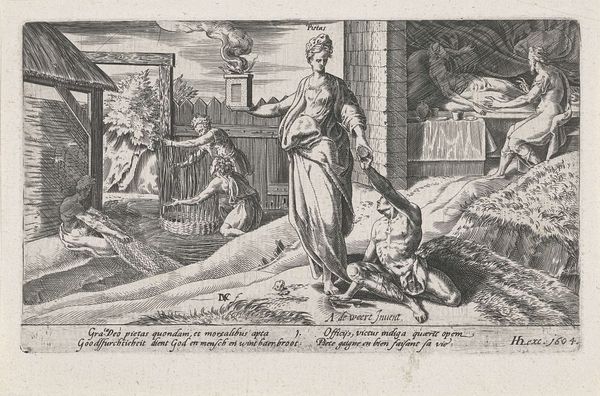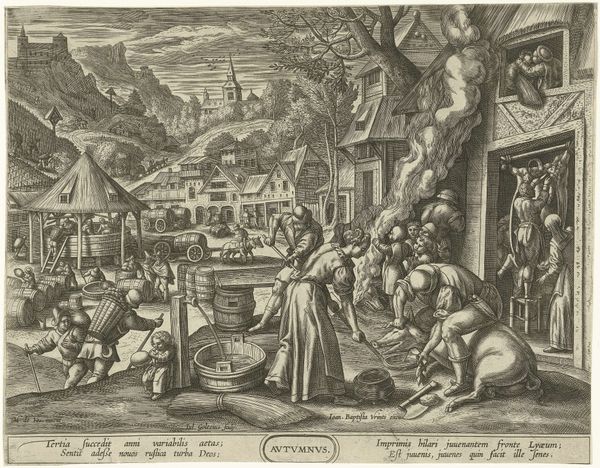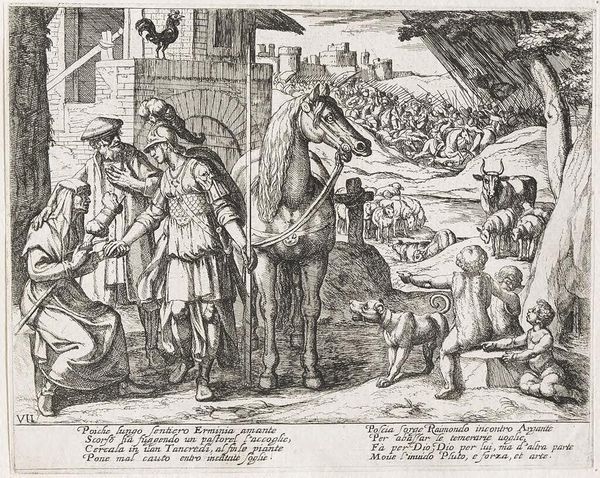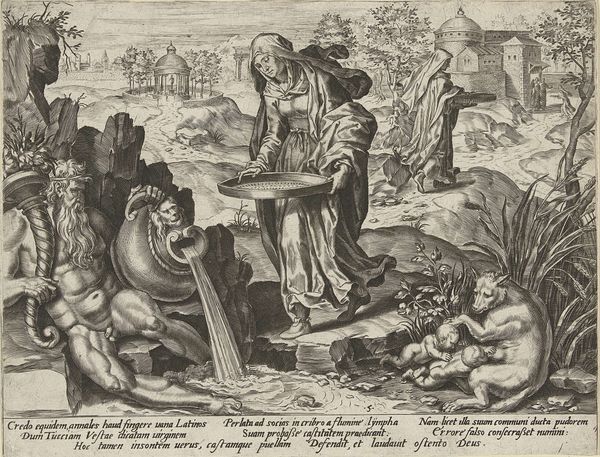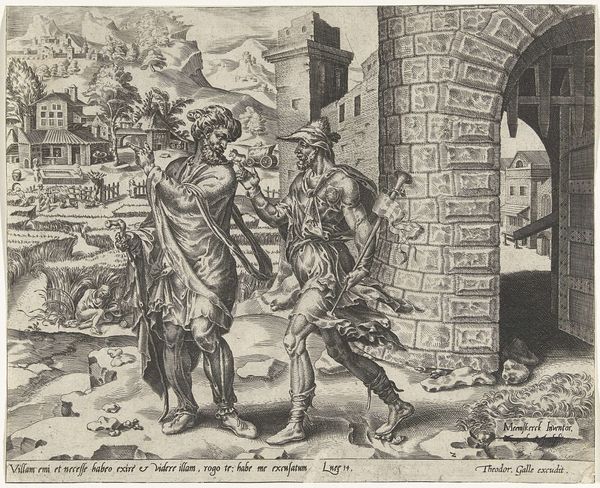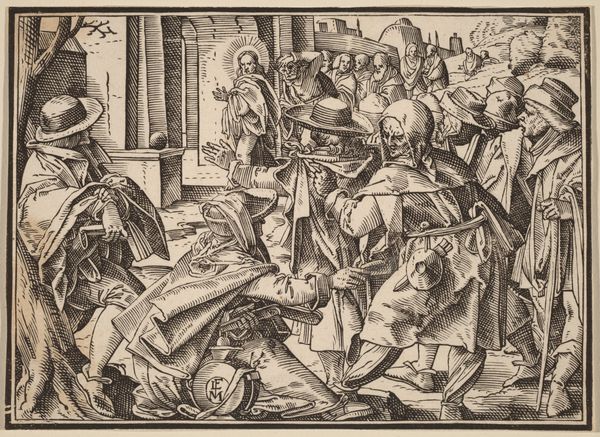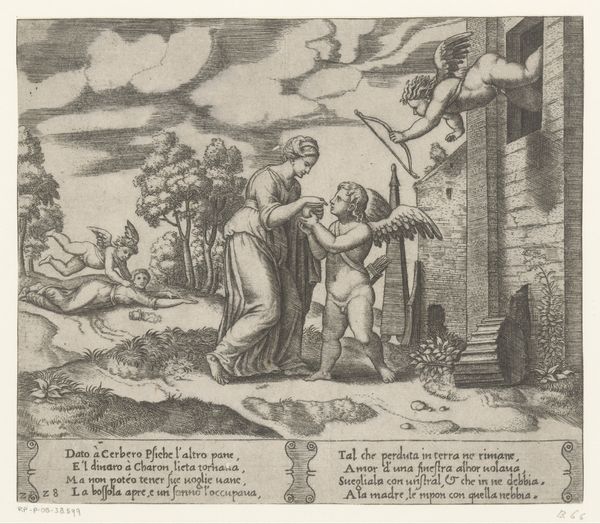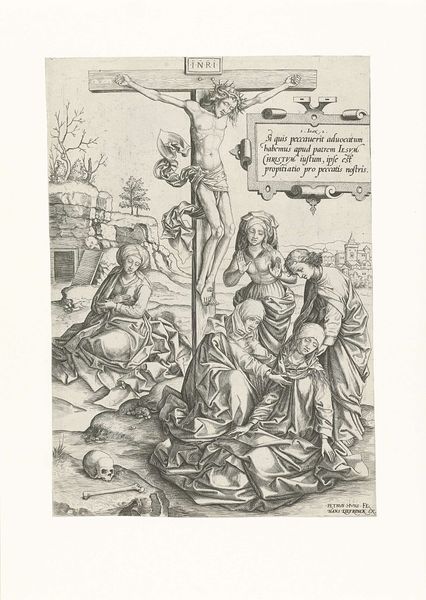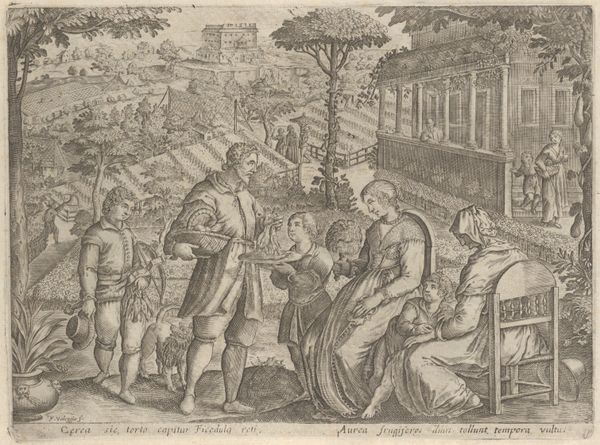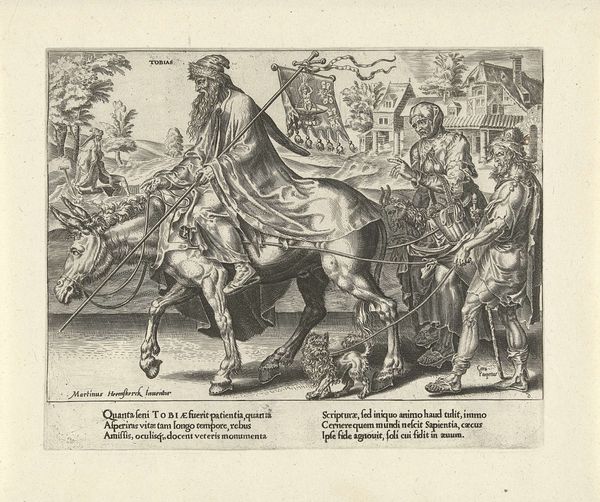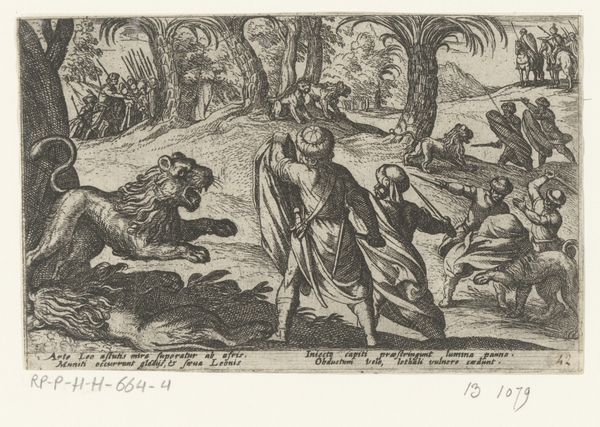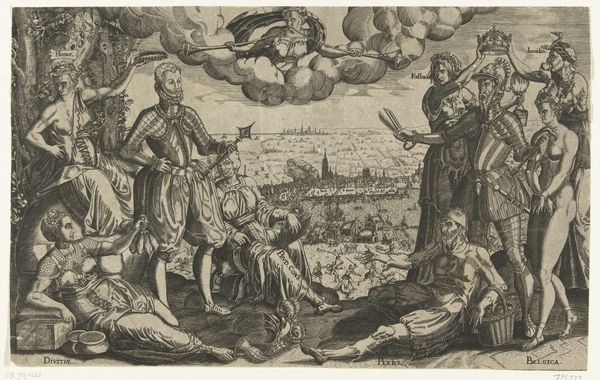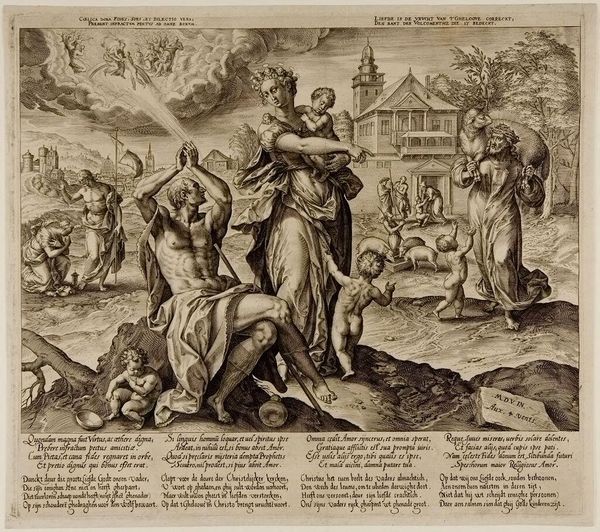
#
light pencil work
#
mechanical pen drawing
#
pen sketch
#
pencil sketch
#
personal sketchbook
#
pen-ink sketch
#
pen work
#
sketchbook drawing
#
sketchbook art
#
fantasy sketch
Dimensions: height 144 mm, width 210 mm
Copyright: Rijks Museum: Open Domain
Benedetto Montagna made this engraving of The Holy Family with John the Baptist using a metal plate, likely copper. Lines were incised into the plate with a tool called a burin, and then ink was applied to the surface. The plate was then pressed against paper, transferring the image. The density of lines determines the depth of shadow and modeling of forms; hatching and cross-hatching created to build up the image’s tonal range. Look at the landscape in the background, where the artist uses precise lines to describe the town. The texture of the landscape and clothing of the figures are all suggested through variations in line. Printmaking was essential to the rise of capitalism. It was a way to reproduce images quickly and cheaply, making them accessible to a wide audience. While Montagna was a skilled artist, his labor was also part of a larger system of production and consumption. The act of engraving is inherently about reproduction, echoing the mass production of goods. This print sits at the intersection of fine art, craft, and the burgeoning commercial world.
Comments
No comments
Be the first to comment and join the conversation on the ultimate creative platform.
